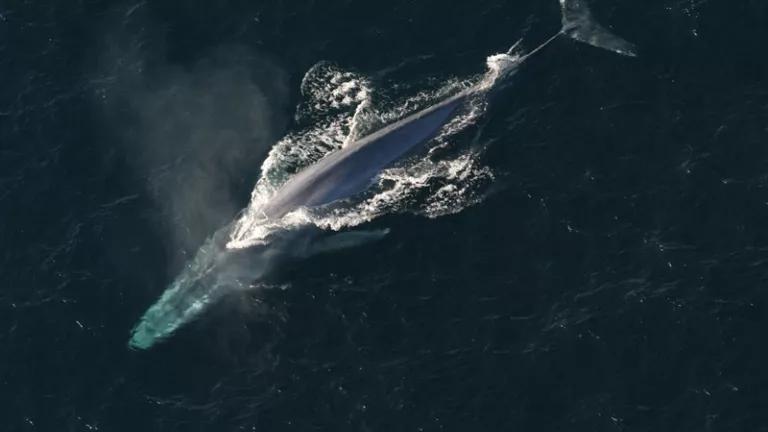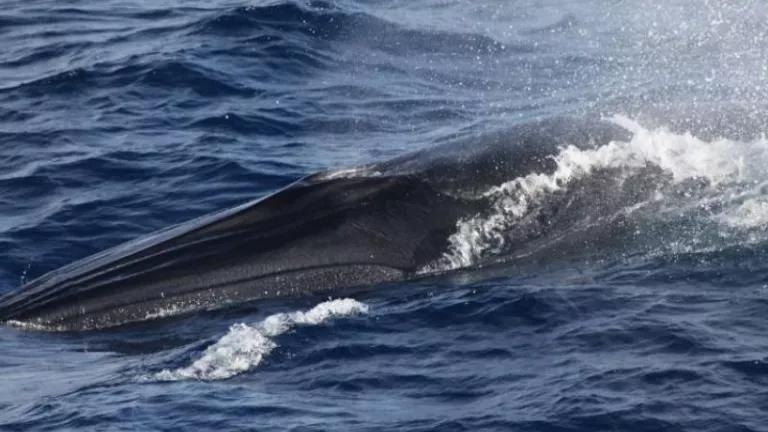Padding the Numbers Won’t Save Ocean Biodiversity
President Biden’s tool to quantify U.S. conservation gains misses the mark .

Blue Whale, Photo by the National Oceanic and Atmospheric Administration
Blue Whale, Photo by the National Oceanic and Atmospheric Administration
The Biden Administration launched a new website called “Conservation.gov” that includes both an interactive map (the “Atlas”) and an accounting of how much of the nation it believes has already been “conserved” for purposes of what is known as “30 by 30,” the global drive to save the world’s plummeting biodiversity by protecting at least 30 percent of the world’s lands and ocean waters by 2030. For U.S. ocean waters, it turns out that the Administration’s figure is “approximately one-third.” In other words, for the nation with the world’s largest ocean area, the Administration appears to be saying—at least purely on the numbers—that it is “mission accomplished” on 30 by 30 already, six years early. Great news, right? Well, as it turns out, not so much.
The administration’s number is inflated. The biggest problem with it is that that the Administration decided to count as “conserved” areas of the ocean where bottom trawling fishing is prohibited, but other kinds of commercial fishing with harmful ecological effects continue unabated. And for the majority of those areas, there never was any bottom trawling going on in the first place! According to the science, these types of partially-protected areas don’t provide sufficient positive biodiversity outcomes and shouldn’t count towards 30x30.
Importantly, and a piece of good news, the administration accompanied its incorrect accounting with a commitment to work more to conserve “a geographically representative, ecologically connected, and climate-resilient set of marine areas off all U.S. coasts.” Although this work has now likely been made more difficult, as I talk about below, NRDC looks forward to fully supporting and partnering in creating any such highly protected marine areas.

Image courtesy of the NOAA Office of Ocean Exploration and Research, 2019 Southeastern U.S. Deep-sea Exploration.
Almost half of the world’s species are in decline. In the ocean, more than one third of sharks, rays and related species are at risk of extinction from overfishing alone. A quarter of marine mammals are threatened or endangered as are six of the seven species of sea turtles, some critically. To stem this biodiversity collapse and at the strong urging of the global scientific community, nations that belong to the Convention on Biological Diversity (CBD) adopted the 30 by 30 goal in 2022. While the U.S. is not a member of CBD, President Biden separately committed the country to 30 by 30 by an executive order signed in his first week in office. The long-awaited “Atlas” released today was intended to help set a baseline for the 30x30 effort. The surprising “one-third” figure represents the Administration’s baseline for the ocean (for land, it’s 13+%).
Think again. The actual number that should count, i.e., achieves the necessary level of biodiversity protection, remains essentially what it was when the Biden Administration took office: 24%, encompassed within several highly-protected marine protected areas (MPAs) established as marine national monuments by Presidents Bush and Obama. This number is not only well short of 30% but, because almost all of the protected area remains out in the central Pacific Ocean, it fails to constitute the ecologically-representative range of protected areas that scientists have called for out of this initiative. Less than 1% of the ocean off the continental U.S. in in highly-protected areas. This is one thing that makes the administration’s just-articulated commitment to create geographically representative MPAs particularly important.
So how did Administration come up with the 1/3 number?
As noted above, the answer is that it includes a number of very large deep sea areas in which fisheries managers prohibited—years ago, in most cases—a harmful commercial fishing practice known as bottom trawling. Although this type of fishing didn’t actually occur over the vast majority of the areas in question at the time the measures were adopted, the concern was that it might in the future.
We support these fishery management areas, which contain patches of deep sea coral habitat in certain portions (NRDC championed the creation of one of them in the Mid-Atlantic region). But, as a biodiversity conservation matter, their shortcoming is that other types of commercial fishing with adverse ecological impacts, like bycatch of unintended species, entanglement and habitat damage, and harms to food webs, can and generally do occur in these same areas. In addition, there’s generally no bar on other types of damaging commercial activity, like oil and gas drilling and mining, happening in these areas.
The administration’s conservation baseline for the ocean also includes the nation’s 15 national marine sanctuaries. Even though the sanctuary system was created in order to safeguard some of the nation’s most iconic, ecologically-vibrant and culturally important ocean areas, most sanctuaries are unfortunately minimally-protected and many are in poor and declining condition.
Calculating the numbers in this way actually threatens to set ocean biodiversity conservation back in this country. What reason is there for our leaders to put in place tough protective measures if they’re being told (incorrectly) that the problem’s been solved? Ocean biodiversity is key to ensuring natural ecosystems’ stability and persistence, and gives our ocean more opportunities to recover from marine heat waves and other climate disturbances. Keeping accurate count of where we are helps us know where we need to be—and provides a push to reach the needed goal.
Counting these types of areas towards 30 by 30 also sets a damaging global precedent. Essentially, it gives other countries, who are accountable to the Convention on Biological Diversity, a road map to count areas as “protected” that are hardly protected at all. The United States should be encouraging countries to create fully or highly-protected marine protected areas (MPAs), which science shows most effectively protect biodiversity. Instead, by counting partial and half measures, ones that address only some threats (and not necessarily the greatest ones), the United States is acting contrary to the guidance of expert bodies like the International Union for the Conservation of Nature (IUCN), and could actually end up undermining global ocean conservation efforts.
The bottom line: we need to create more highly protected areas across a broad array of ocean habitats to successfully reach our 30 by 30 goal. Not all conservation actions, while they may bring environmental benefits, contribute to the 30 by 30 target. It is critically important to determine the subset of conservation measures that do contribute to 30 by 30. Failing to reach the 30 by 30 goal has deep ramifications for our ocean that people depend on for life as we know it.
But it’s not too late. The Biden Administration could still fix the ocean components of its accounting and the Atlas, which is labelled as a “beta version.” And President Biden should also take advantage of the precious remaining months in this presidential term to do what other presidents of both parties have done before him: create additional highly-protected MPAs off the continental U.S.—something that would have incalculable benefits for our treasured ocean wildlife.




